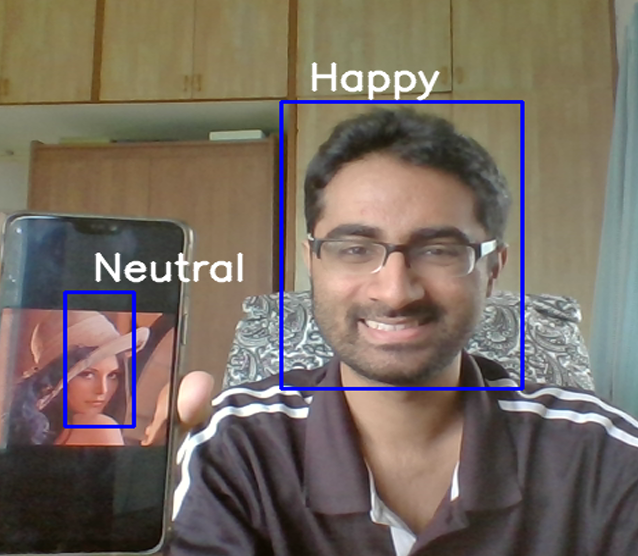This project aims to classify the emotion on a person's face into one of seven categories, using deep convolutional neural networks. This repository is an implementation of this research paper. The model is trained on the FER-2013 dataset which was published on International Conference on Machine Learning (ICML). This dataset consists of 35887 grayscale, 48x48 sized face images with seven emotions - angry, disgusted, fearful, happy, neutral, sad and surprised.
- Python 3.6, OpenCV 3 or 4, Tensorflow, TFlearn, Keras.
- To install the required packages, run
pip install -r requirements.txt.
There are two versions of this repository - written using TFLearn and Keras. Usage instructions for each of these versions are given below.
- First, clone the repository with
git clone https://github.com/atulapra/Emotion-detection.gitand enter the cloned folder:cd Emotion-detection.
-
Download the trained model files from here, extract it and copy the files into the current working directory.
-
To run the program to detect emotions only in one face, type
python model.py singleface. -
To run the program to detect emotions on all faces close to camera, type
python model.py multiface. Note that this sometimes generates incorrect predictions. -
The folder structure is of the form:
TFLearn:- emojis (folder)
model.py(file)multiface.py(file)singleface.py(file)model_1_atul.tflearn.data-00000-of-00001(file)model_1_atul.tflearn.index(file)model_1_atul.tflearn.meta(file)haarcascade_frontalface_default.xml(file)
-
Download the FER-2013 dataset from here and unzip it inside the Keras folder. This will create the folder
data. -
If you want to train this model or train after making changes to the model, use
python kerasmodel.py --mode train. -
If you want to view the predictions without training again, you can download my pre-trained model
(model.h5)from here and then runpython kerasmodel.py --mode display. -
The folder structure is of the form:
Keras:- data (folder)
kerasmodel.py(file)haarcascade_frontalface_default.xml(file)model.h5(file)
-
This implementation by default detects emotions on all faces in the webcam feed.
-
With a simple 4-layer CNN, the test accuracy stopped increasing at around 50 epochs at an accuracy of 63.2%.
-
First, we use haar cascade to detect faces in each frame of the webcam feed.
-
The region of image containing the face is resized to 48x48 and is passed as input to the ConvNet.
-
The network outputs a list of softmax scores for the seven classes.
-
The emotion with maximum score is displayed on the screen.
- "Challenges in Representation Learning: A report on three machine learning contests." I Goodfellow, D Erhan, PL Carrier, A Courville, M Mirza, B
Hamner, W Cukierski, Y Tang, DH Lee, Y Zhou, C Ramaiah, F Feng, R Li,
X Wang, D Athanasakis, J Shawe-Taylor, M Milakov, J Park, R Ionescu, M Popescu, C Grozea, J Bergstra, J Xie, L Romaszko, B Xu, Z Chuang, and Y. Bengio. arXiv 2013.


